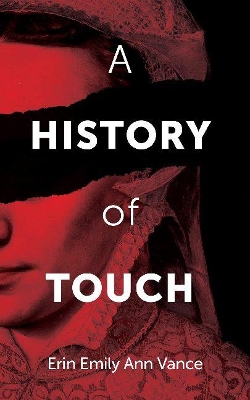Thank you, NetGalley for the chance to read and review the ARC for A History of Touch by Erin Vance!
A History of Touch by Erin Emily Ann Vance comes out on the 1st of May, this year. This book is an attempt to bear witness to difficult women throughout history, who were brushed off as hysterical or witches, which means we range from Cassandra to Rosemary Kennedy; from the lobotomized to those burned at the stake.
While the premise is fantastic, I don't actually like most of the poems in this book. I just couldn’t get into them and they didn’t make me feel anything, even though these are women who I should want to feel for.'
That being said, there were definitely some poems that I liked, such as Confession. The speaker here is Elsie Wright. Elsie and her sister Frances were responsible for the Cottingley Fairies hoax; 5 pictures that they used to try and prove that fairies were real. While Elsie confessed that all were stages, Frances maintained, until the end, that the last one was real.
According to Wikipedia, the entire thing may have been a joke, with the girls too embarrassed to admit that the pictures were a prank when Sir Arthur Conlon Doyle (YES THE SHERLOCK HOLMES DUDE) thought they were real.
That goes to show that as long as news has existed, human beings have always had a tendency to believe the fake kind.
That goes to show that as long as news has existed, human beings have always had a tendency to believe the fake kind.
It is said that witches ride in eggshells downriver
to deliver babies out of wedlock, under cover of night,
that witches turn into hares to escape the grasping fingers
of men with scythes for eyes and briars for tongues.
Of the truthfulness of these two things I do not know,
but I do know that when they ducked Grace Sherwood in
the water, with a thirteen-pound bible tied to her neck,
she sputtered to the surface
and spat in the faces of her accusers.
~ The Mouth of Lynnhaven
